
The end, whenever it came, was always going to be too soon for Katsushika Hokusai. There was still so much to see. So much he had not painted. On his deathbed, Hokusai, attended by his doctor, said a prayer. ‘If heaven will extend my life by ten more years…’. He paused and made a private calculation. ‘If heaven will afford me five more years of life, then I’ll manage to become a true artist.’ He may have been 90, but he wasn’t done yet.
In life, Hokusai (1760–1849) painted dragons, creatures of long life, by the dozen. He has them disappear in puffs of inky smoke, then reappear across the page. He painted the phoenix, bird of resurrection. He painted Mount Fuji, immutable, enduring, outlasting all his fellow painters, calligraphers, woodblock-cutters and sellers of coloured books who scrabbled for a living in Edo, modern Tokyo. They were but cherry blossoms, pink for a season, maple leaves washed away by a current.
He changed his name more than ten times in his long life. In his seventies, he was Manji, which meant ‘ten thousand things’ or ‘everything’. That is what he wanted to paint — everything. The 15 volumes of the Hokusai manga (1814–1878) went some way towards it: a pictorial encyclopedia of everything under the sun: frogs, snakes, samurai, sumo wrestlers, parasols, fish markets, farm ploughs, oceans and tea bowls.
He signed his woodblock series ‘One Hundred Views of Mt Fuji’ (1849): ‘Brush of Manji, old man crazy to paint.’ He does look a bit mad in his 1842 ‘Self-portrait, aged 83’ (see p49) — skinny, stooped, his face wrinkled and puckered as a pickled plum, pointing at something he’s seen in the distance. Something to sketch? He looks as if he’s turning to call to someone, perhaps his daughter Eijo, an artist in her own right, asking her to bring his brush and ink. Not his glasses, though. He proudly signed his surimono — luxury print — ‘Pine tree and full moon’ (1848): ‘eye glasses not needed.’
If a work wasn’t up to snuff, he excused it with the note: ‘painted while drunk.’ He would sooner admit to inebriation than infirmity. In his last years, he stamped a ‘one hundred’ seal on his paintings — a statement of intent to reach his century. Only then could he call himself a true artist.
‘From the age of six,’ he said, ‘I had a penchant for copying the form of things, and from about 50, my pictures were frequently published; but until the age of 70, nothing I drew was worthy of notice… Thus when I reach 80 years, I hope to have made increasing progress, and at 90 to see further into the underlying principles of things, so that at 100 years I will have achieved a divine state in my art, and at 110, every dot and every stroke will be as though alive.’
The British Museum dedicates its summer exhibition Hokusai: Beyond the Great Wave to the Hokusai who at 70 was just beginning. He joins Titian, Rembrandt and Turner as an artist who became more inventive, restless, curious and daring in his dotage. Like his near-contemporary J.M.W. Turner (1775–1851) he was mesmerised by water in all its moods. How to catch its movement, light and colours. Beyond the Great Wave asks us to see more of Hokusai than his much-reproduced ‘Great Wave’, properly: ‘Under the Wave Off Kanagawa’ (1831). You could drown in ‘Great Wave’ souvenir socks, scarves, key rings, duvets and tea towels. There’s even a ‘Great Wave’ emoji.
While there is more to Hokusai than the tsunami wave that curls like a dragon’s claw above a Mount Fuji no higher than a molehill, waves and water do swell and roil through his work. One of his earliest woodblock prints was of the ‘Kabuki actor Segawa Kikunojo III as Oren’ (1779), made when Hokusai was 20 and working in the workshop of Edo print-master Katsukawa Shunsho. The screen behind the actor is painted with the very first of Hokusai’s ‘angry waves’. It threatens to crash out of the painted surface, soaking the actor as he preens in his kimono.
Shunsho was the leading producer of ukiyo-e — ‘floating world’ — woodblock prints. The ‘floating world’ was Edo’s pleasure quarter. A place of geishas and kabuki theatres, transgressive and unregulated. ‘Uki’ means floating, frivolous or carefree.
The ukiyo-e prints of beautiful courtesans (bijin-ga), portraits of actors (yakusha-e) and erotic couplings (shunga), found a keen, literate audience. A merchant or artisan could buy a print of Hokusai’s ‘Beauty with an umbrella under a willow’ (c.1801–4) for the price of a helping of noodles. The most successful prints could sell in their thousands. Hokusai’s later landscape prints such as the Views of Mt Fuji, among them ‘Under the Wave Off Kanagawa’, may have run to 8,000 impressions.
Views of Mt Fuji was printed with Prussian blue mixed with traditional Japanese indigo. This pigment — aizuri ichimai — newly arrived from Europe gave an extraordinary, deep, saturated colour. Hokusai, steeped in blue, paints waves, waterfalls and whirlpools, eddies and seasick swirls. Waterwheels turn and tip; a fisherman strains against his lines; porters wade across the river Oi with pilgrims on their shoulders; skiffs battle the current. Carp swim against rapids; plovers skim the surf; and ducks dive for pondweed, up tails all.
He amused the shogun Tokugawa (1760–86) with his chicken trick. He painted a broad band of blue on a long sheet of paper. Then, pulling a live chicken from a bag, he dipped the bird’s feet in red ink and had it run across the sheet. He called it ‘Autumn leaves on the Tatsuta River’.
He liked to show the wind whipping the spray or, in mischievous spirit, lifting skirts, stealing hats and carrying off umbrellas. In the woodblock print ‘Ejiri, Suruga province’ (1831) a straw hat is blown off and soars upside-down like a flying saucer. In other prints, snow settles on the peaks of pointed hats, and climbers of sacred mountains lift their brims to see the way. He drew ‘Fuji with a hat’ (c.1834) showing the top of the mountain wearing a kasa-gumo — a cap of cloud.
When Japan opened to the west after 1854, prints by Hokusai and his contemporaries Ando Hiroshige and Kitagawa Utamaro flooded European art markets. Hokusai’s prints were bought by Van Gogh and Gauguin. The flat modelling of ukiyo-e style was taken up by Manet, Whistler, the impressionists and les nabis. Calligraphic black lines in sumi — Chinese ink — inspired Bonnard, Degas and Aubrey Beardsley. The brocade richness of colour and patterning influenced the Pre-Raphaelites, the arts and crafts movement and Tiffany. Hokusai’s delight in the littleness of everyday life — a geisha’s toothpowder, a kitten pulling its leash — thrilled Baudelaire’s Painter of Modern Life crowd. Modernism begins with Hokusai.
Today, the smartphone apps Prisma and Moku Hanga turn your holiday snaps into ukiyo-e prints. I am in Tokyo as I write, Hokusai-ing my photos and playing spot-the-hat at the Sumida Hokusai Museum. We have arrived, everyone tells us, just late for the cherry blossom. Too short a season.
Got something to add? Join the discussion and comment below.
Get 10 issues for just $10
Subscribe to The Spectator Australia today for the next 10 magazine issues, plus full online access, for just $10.


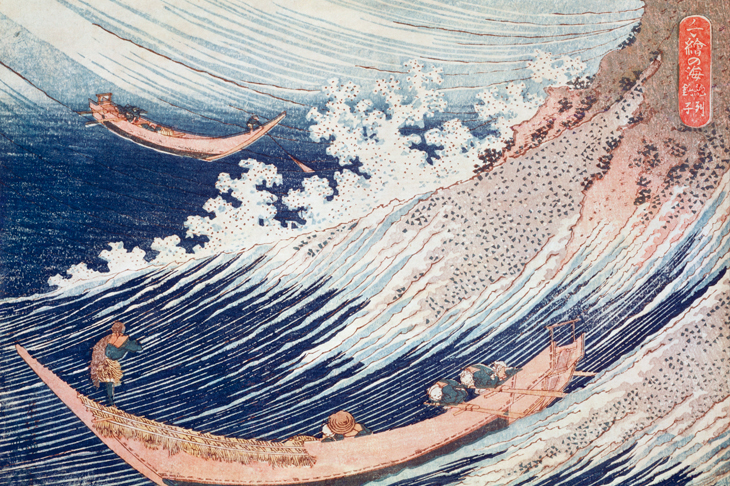
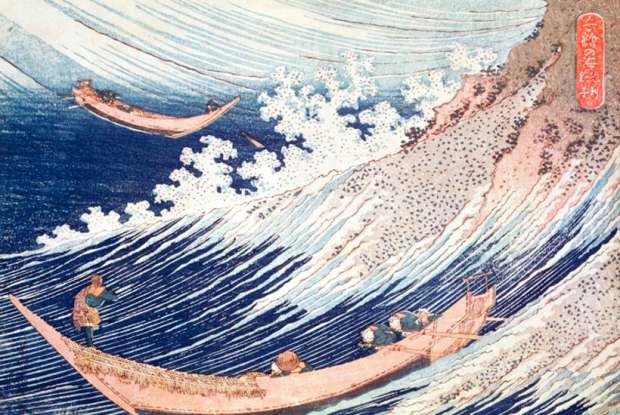
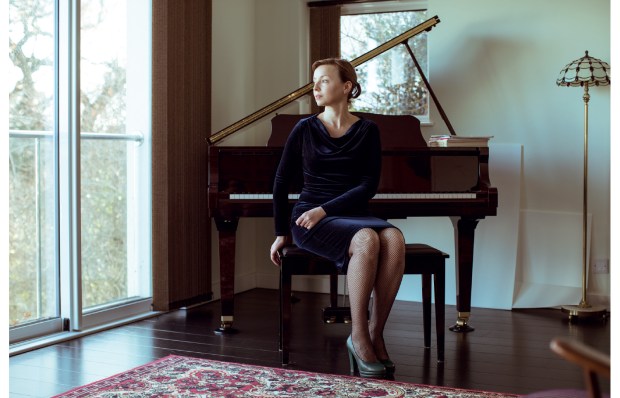


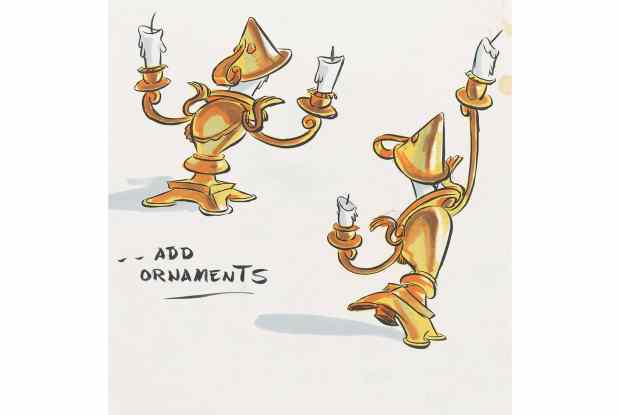
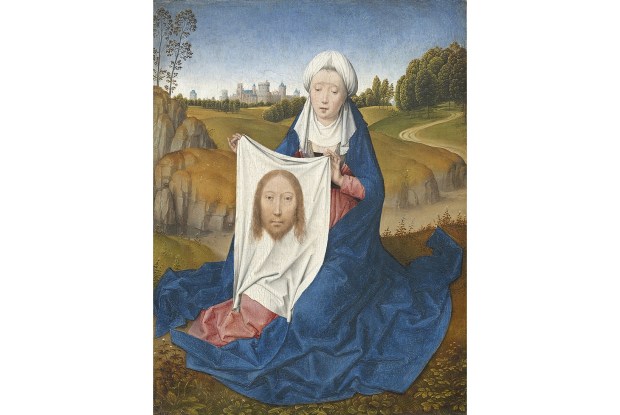






Comments
Don't miss out
Join the conversation with other Spectator Australia readers. Subscribe to leave a comment.
SUBSCRIBEAlready a subscriber? Log in